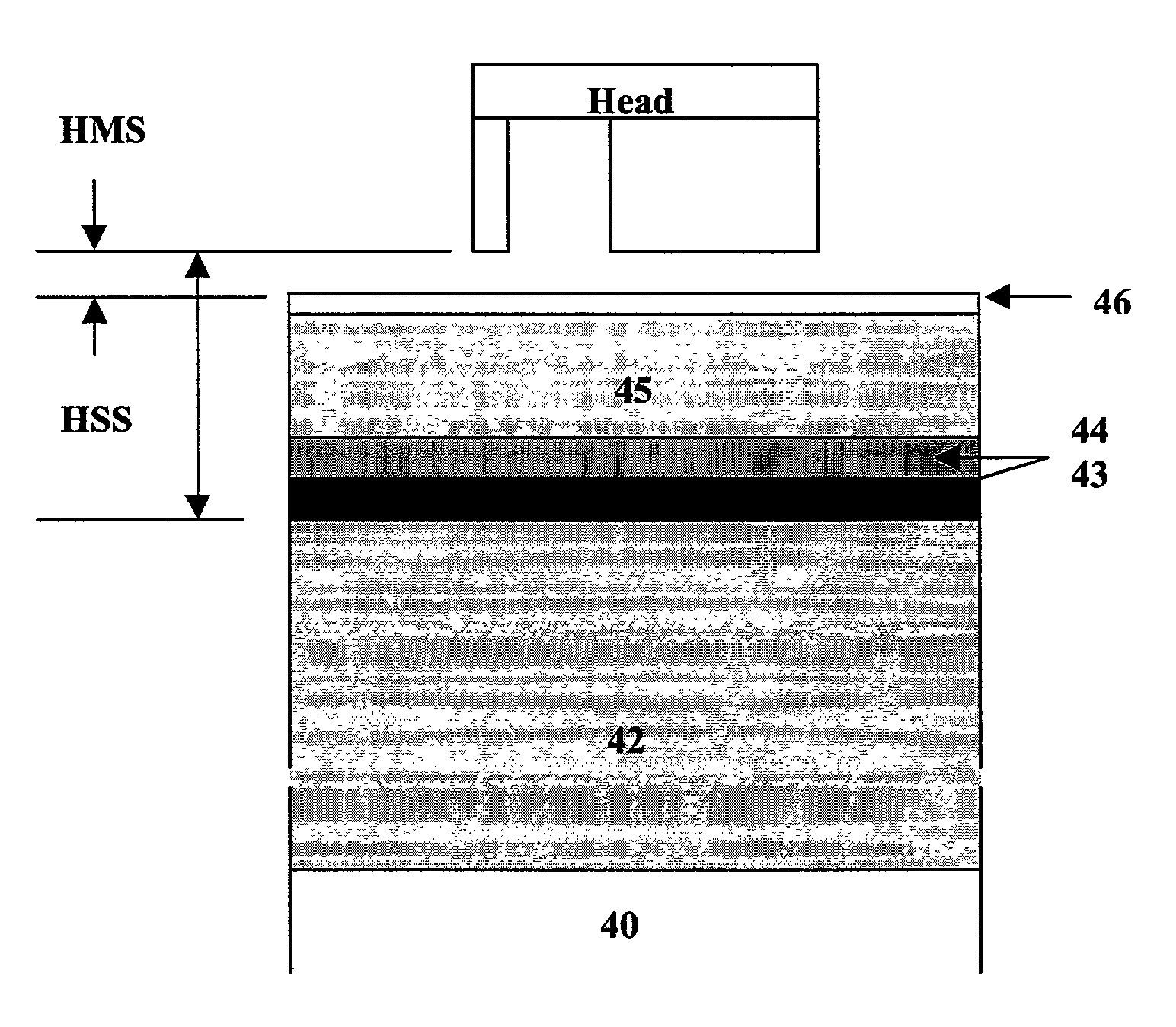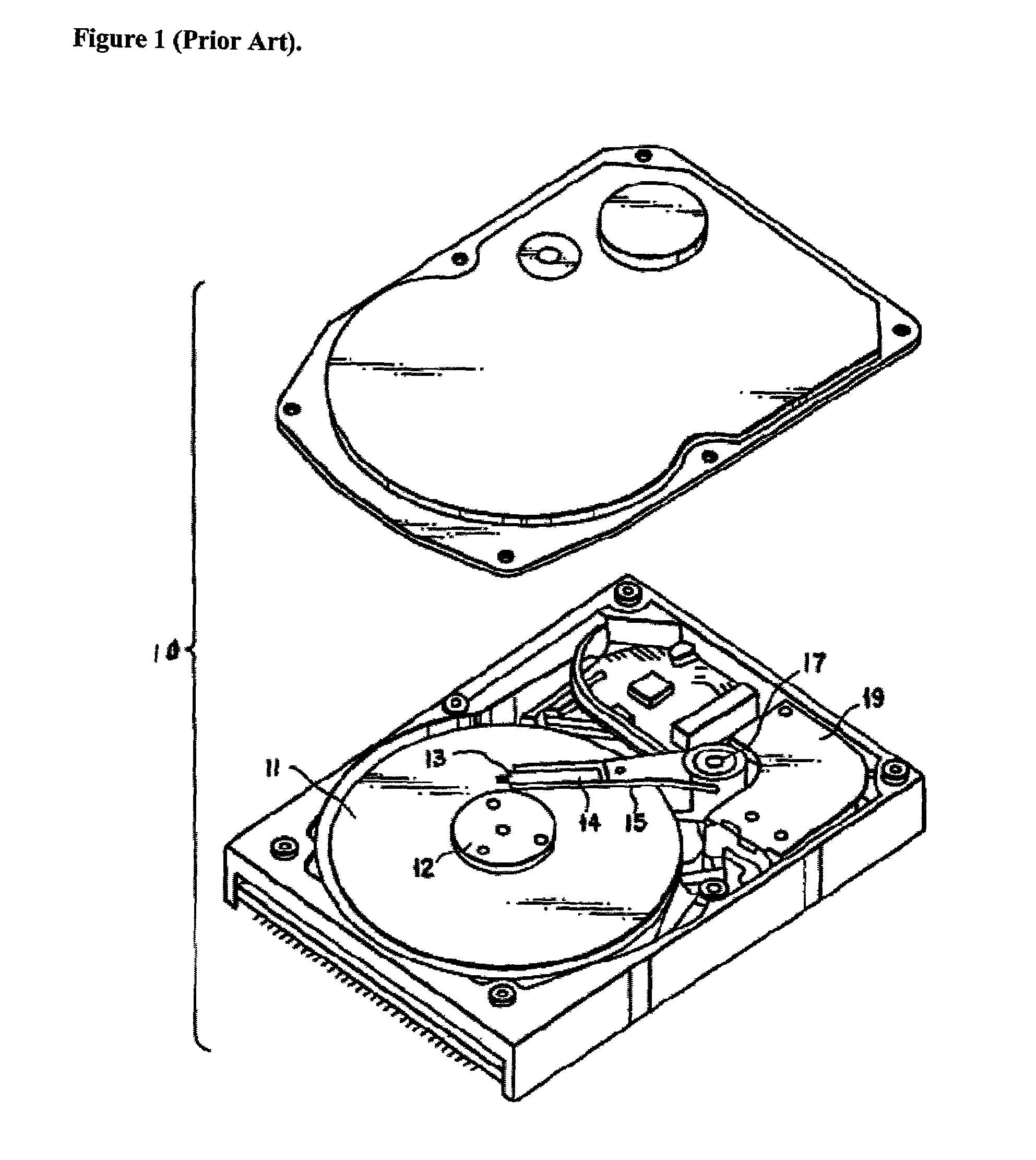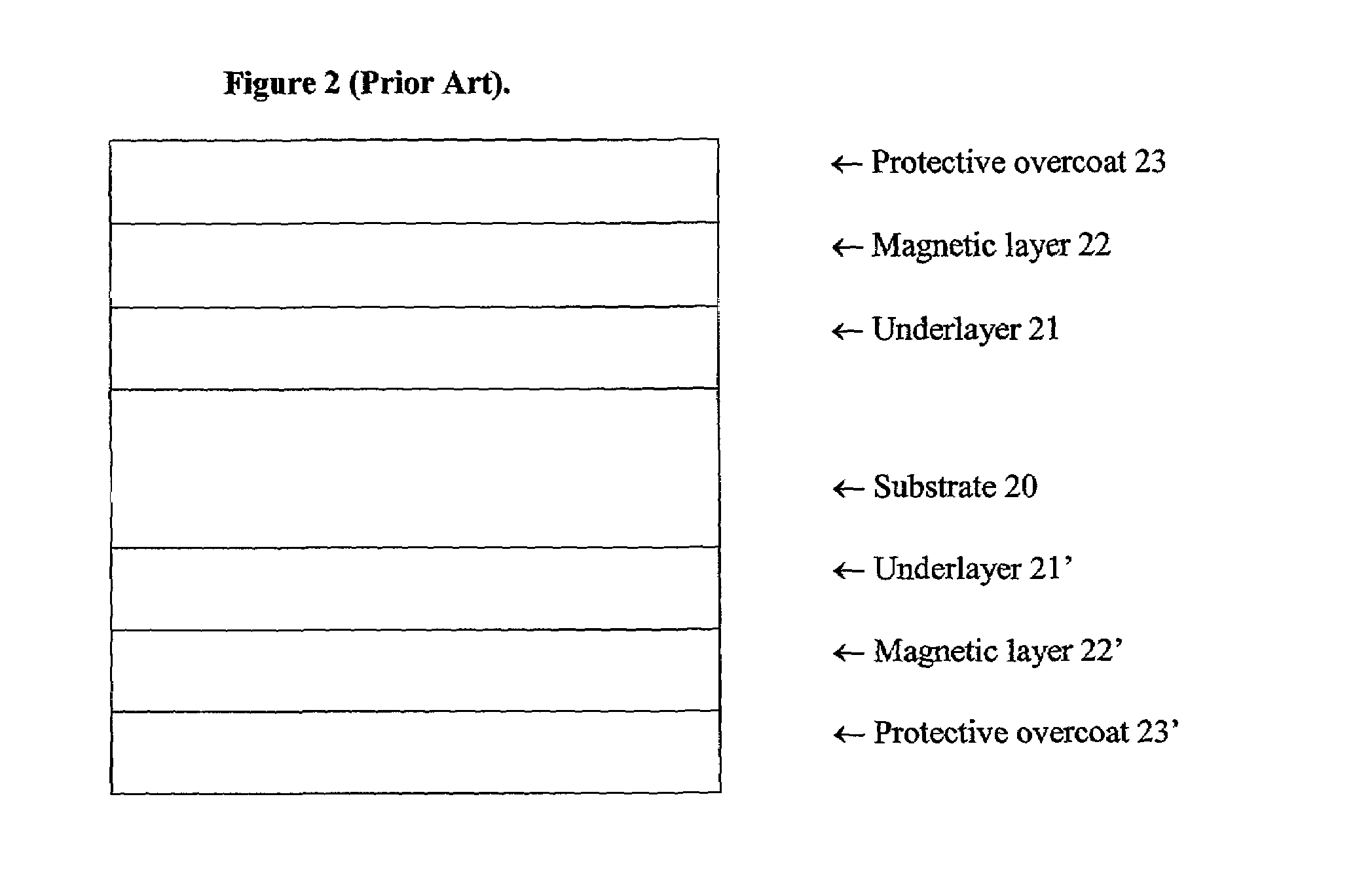Amorphous soft underlayers for perpendicular recording media
a technology soft underlayers, which is applied in the field of perpendicular recording media, can solve the problems of medium noise, most difficult along the hard axis of magnetization, and extreme difficulty in producing magnetic recording media satisfying such demanding requirements, and achieves low dc noise and high areal recording density.
- Summary
- Abstract
- Description
- Claims
- Application Information
AI Technical Summary
Benefits of technology
Problems solved by technology
Method used
Image
Examples
examples
[0043]All samples described in this disclosure were fabricated with DC magnetron sputtering except carbon films were made with AC magnetron sputtering.
[0044]The surface parameters were measured by atomic force microscope (AFM). The AFM used for this invention has the trade name NanoScope.® The statistics used by the AFM are mostly derived from ASME B46.1 (“Surface Texture: Surface Roughness, Waviness and Law”) available from the American Society of Mechanical Engineers, which is incorporated herein by reference.
[0045]In particular, the surface parameters are defined as follows:
[0046](1) Average surface roughness (Ra): Arithmetic average of the absolute values of the surface height deviations measured from a mean plane. The value of the mean plane is measured as the average of all the Z values within an enclosed area. The mean can have a negative value because the Z values are measured relative to the Z value when the microscope is engaged. This value is not corrected for tilt in the...
PUM
| Property | Measurement | Unit |
|---|---|---|
| Ra | aaaaa | aaaaa |
| thickness | aaaaa | aaaaa |
| thickness | aaaaa | aaaaa |
Abstract
Description
Claims
Application Information
 Login to View More
Login to View More - R&D
- Intellectual Property
- Life Sciences
- Materials
- Tech Scout
- Unparalleled Data Quality
- Higher Quality Content
- 60% Fewer Hallucinations
Browse by: Latest US Patents, China's latest patents, Technical Efficacy Thesaurus, Application Domain, Technology Topic, Popular Technical Reports.
© 2025 PatSnap. All rights reserved.Legal|Privacy policy|Modern Slavery Act Transparency Statement|Sitemap|About US| Contact US: help@patsnap.com



